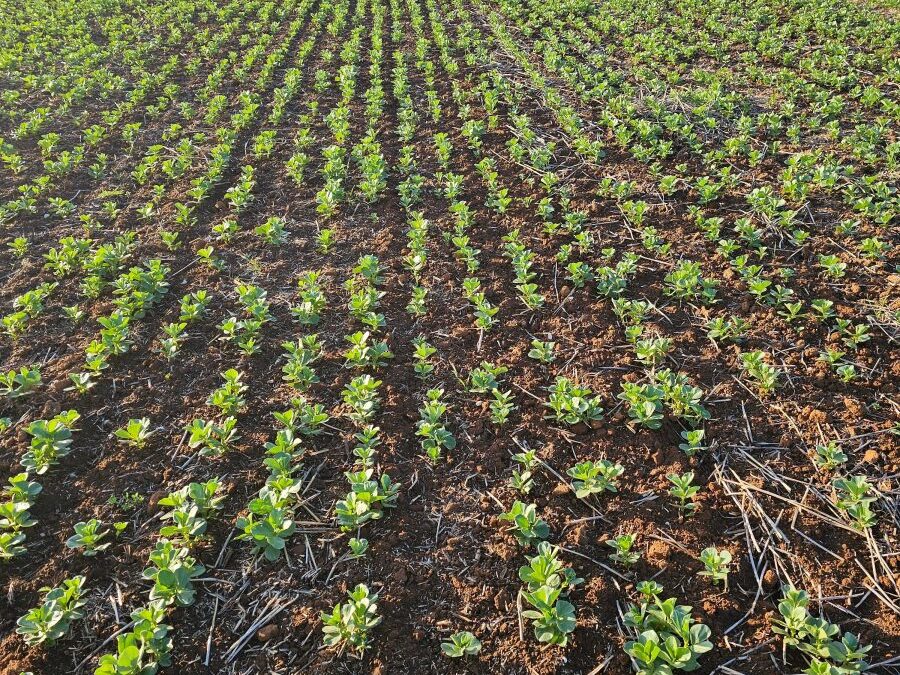Liz Wells, June 14, 2023
RECENT rain across south-eastern Australia has helped faba bean and lentil crops get off to a strong start in a mostly steady market, while patchy conditions in north-west New South Wales are limiting new-crop chickpea area.
ABARES last week issued its initial forecasts for Australia’s five major pulses, which are estimated to weigh in at 2.684 million tonnes (Mt) this year, down 32pc from 3.95Mt grown in 2022-23.
All prices quoted are in Australian dollars per tonne unless otherwise indicated.
Chickpeas
Prices for CHKP1 and CHKPM have rallied since early May by up to $50/t to fill the last bulk cargoes for the season on Queensland shipping stems.
To offset the drop in bulk accumulation, much more affordable container rates and improved availability of containers have seen the boxed trade look the healthiest it has since COVID hit.
CHKP1 is trading at around $650/t delivered Downs packer, up at least $50/t on early May prices, but in very thin volume following a surprisingly large bulk export program pointed at Pakistan.
ABARES has forecast Qld new-crop area at 250,000ha, up 20pc on last year, and nearly all of this has now been sown in mostly good conditions.
Questions remain over whether New South Wales will plant all of the 170,000ha ABARES has forecast, with dry conditions impeding progress in the major growing area which extends from Moree to Walgett and north to the Qld border.
Delta Ag Moree-based consulting agronomist Rob Long said recent rain has been ideal for the Narrabri district, but lighter falls on heavier country around Moree and west mean chickpeas are likely to be the crop that growers overlook in favour of wheat and barley in the late window.
Growers generally apply a residual herbicide prior to planting chickpeas to control weeds in the crop, and this restricts summer-cropping options in ensuing months.
Mr Long said for this reason, late planting of chickpeas was unlikely.
“If there’s an opportunity to plant chickpeas, there’ll be an opportunity to plant wheat or barley,” Mr Long said.
“Most of the crop that’s planted will be wheat or barley now.”
With the El Niño Alert issued this month, the likelihood of a dry spring is high, which makes cereals a better option because they provide groundcover, and have the option to be cut for hay if rain cuts out.
Faba beans
Feedmills around Melbourne are paying around $450-$475/t for faba beans, little changed from last month.
“That is better than export markets,” Agri-oz Exports managing director Francois Darcas said.
“Export demand for fabas is weak.
“Egypt seems to have enough for the time being, and their payment problems are not improving.”
As a result, demand for fabas delivered port has dwindled, and shipping stems indicate no cargoes from South Australian or Victorian ports are booked out to late August.
Limited container trading is taking place at around $470-$480 DCT, which equates to about $420/t delivered ports, $10-$20/t down from levels quoted early May.
On the production front, recent showers and storms have crops in the key producing states of South Australia and Victoria in good stead for at least average yields.
Lentils
Up-country packers are packing around $760-$770/t for Nipper and Hallmark types, and $830/t for the larger Nugget and Jumbo types.
“The market’s pretty stable at the moment, and we’re not seeing any real direction change,” ETG Horsham-based trader Todd Krahe said.
More than 120,000t of lentils is due to be exported in bulk from SA and Vic ports in total over the next four weeks as containerised exports reanimate after being in the doldrums since early 2020.
Bulk freight is still the more attractive option at around US$50/t per handy-size vessel to South Asia, but containers at $60-$70/t are building business as they respond to an improved supply of food-grade 20-foot equipment and more sailings on offer.
“Transit times are back to what they should be, and shipping lines are putting on extra stock to keep trade moving.
“Container rates aren’t back to pre-COVID levels, but they’re back to a level where they’re competitive with bulk.”
India remains the volume buyer of lentils, with the UAE and part cargoes to Egypt bolstering demand.
On the production side, planted area across SA and Vic has established well in the optimum window.
“Everything’s looking good after rain last week; crops in Vic got 20-30mm, and some a bit more if they were under a storm, so compared to last week, crops are up and moving, and everything’s got a nice green tinge to it.
“There’s talk of El Niño…but if you ignore that, we’re looking at a decent season.”
Mungbeans
Harvesting of mungbeans is under way in Central Queensland, where the bulk of the current crop is now being harvested.
Australian Mungbean Association president and Australian Choice Exports managing director James Hunt said China remains the major market for the small amount of unpriced beans coming to market.
Prices are steady at around A$1450/t for processing grade, and $1350/t for manufacturing,
“There aren’t many beans around, and that bodes well for the price,” Mr Hunt said.
While wet conditions in spring of last year had Australian exporters hopeful of a bumper crop, the reverse was the result, largely because of the unusually dry summer in southern Qld that severely limited planting.
“Unless there’s some big surprise out of CQ, I’d say 50,000t would pull it up.”
That national estimate includes around 10,000t from NSW, and “virtually nothing” from southern Qld’s Darling Downs.
The Burdekin region of North Queensland is also a growing area where crops can be planted in August.
However, Mr Hunt said high sugar prices mean the region’s growers are likely to go for the safer option of cane.
“There’ll be a few mungbeans go in up north, but cane looks like a much better option for growers this season.”
Source: Grain Central

